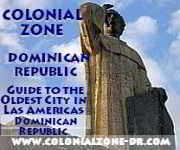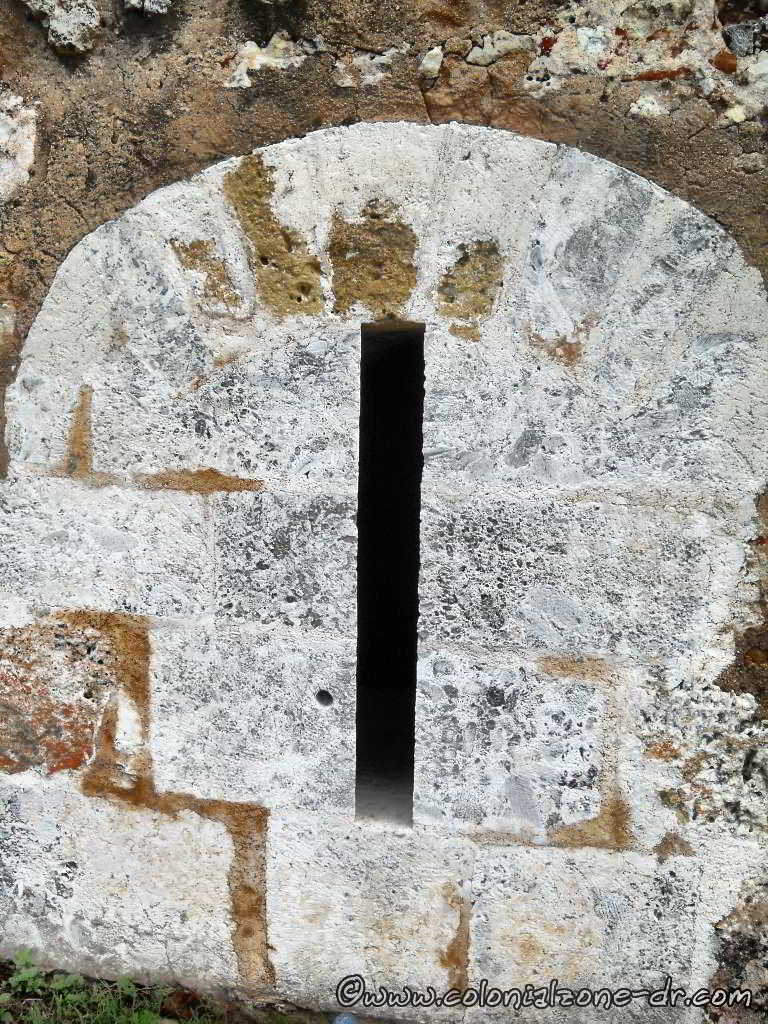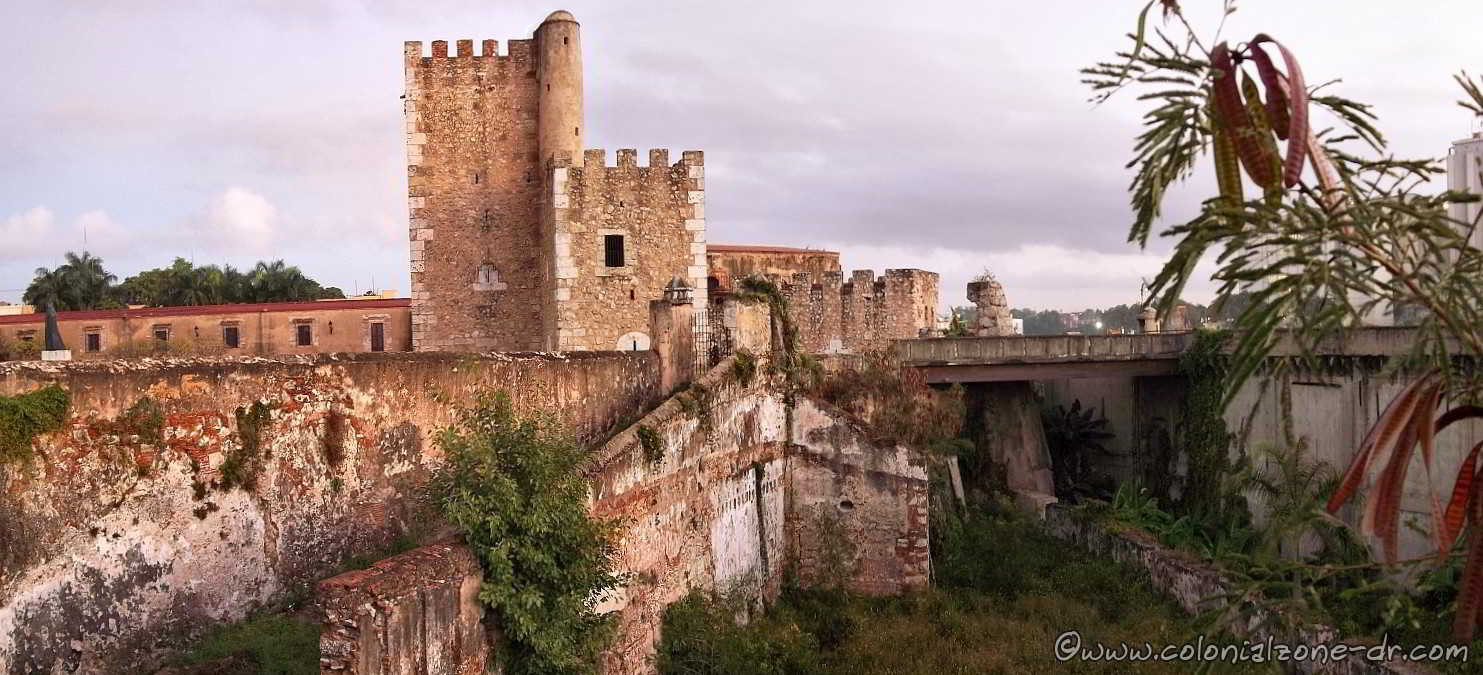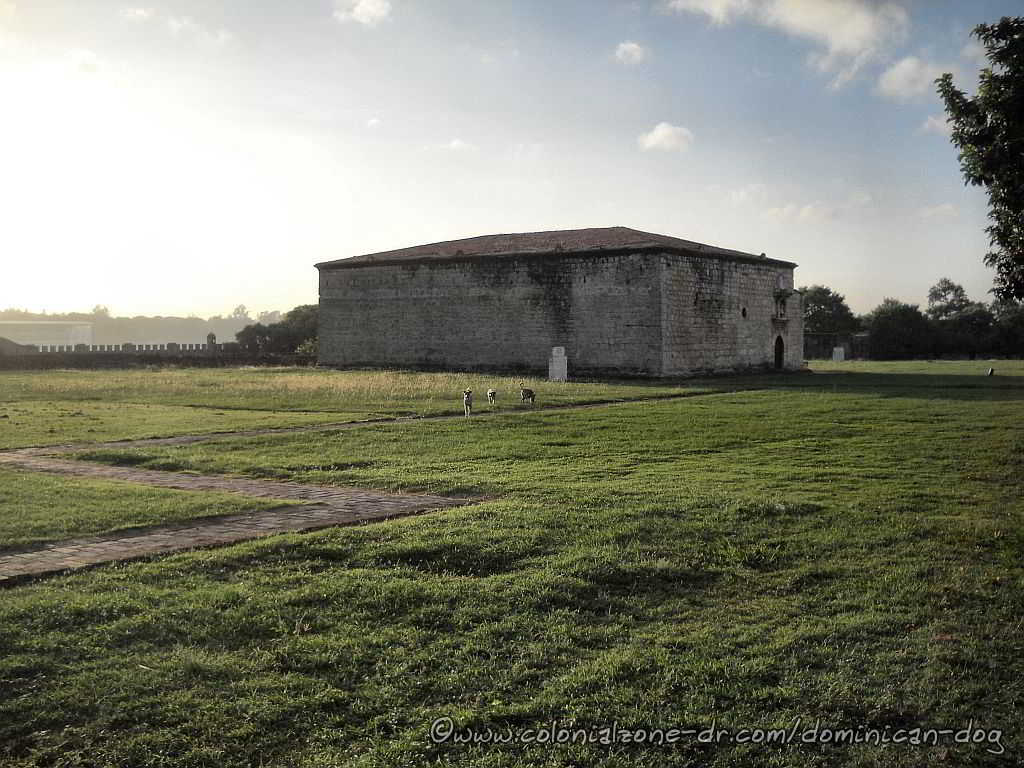

If you found my web site useful consider making a donation through Pay Pal.
Thanks!

|
|

Custom Search


Fortaleza Ozama Ciudad Colonial History 2
Home | Dining & Night Life | Hotel | Sights | Pictures | Music | Colonial Zone Map | Hot Spots! Directory | Site Search
site map Copyright © 2005 - 2015 All Rights Reserved. Colonial Zone-Dominican Republic (DR)
Our complete exchange rate tool.
Home | Calendar | Night Life/Dining | Sight Seeing | Pictures | Businesses | Artists | Food | Helps | History | Language | Music | Media | Pastimes | Products | Tradition/Legend | Links | About Us | Buy Mamajuana | News Blog | DR Gringa's Life Blog | Dominican Dog Blog | Web Designer
[TOP]
3) The Tower of Homage/ Torre del Homenaje resembles a medieval castle. It is the oldest fortress in the Americas and was build by Nicolás de Ovando in 1503. Ships were hailed form the top of this monstrous looking building. It has very little ornamentation and is very serious and sobering. This tower with its 2-meter thick walls was the tallest building (18m) in the entire colony in the 16th century. It is the only building of its type in the New World. The main gate faces north where is the remains of the coat of arms of Charles V that the Haitians tried to remove during their occupancy, but somehow this was saved.
The Tower has served many purposes in its long history. Don Diego Colon, Admiral Christopher Columbus' son, and his wife, Doña Maria of Toledo (she was a relative of King Ferdinand the Catholic) stayed here while their new home, The Alcazar de Colon, was being built. The family lived on the second floor and the servants lived on the first. If you enter in the main floor of the tower there is a courtyard. On the far side is an opening where you can look down into a brick dungeon where Juan Pablo Duarte was held during the Haitian occupation in 1836. It was also a prison where many political figures were jailed. Peña Gómez, Juan Bosch and Bienvenido Peynado all had the distinction of being incarcerated there. The north wing was the residence of the warden.
This monstrous building surrounds an interior courtyard where many different rooms used for different functions opens onto. In this courtyard of the tower is the dungeon where Juan Pablo Duarte was confined during the Haitian occupation. During the Trujillo era prisoners were incarcerated here. The South wing held an arsenal and a cistern.
The windows like openings in the tower are called ojos magicos/ magic eyes (pictured right +click image to enlarge). Through these openings the person on the inside could watch the comings and goings on the outside without being seen. Also it had a great advantage when it came to defending the area were the larger openings called aspilleras. It would be easy shooting out the small "eye" and very difficult trying to shoot into the thin line from the outside.
+click to enlarge
Tower of Homage from behind
+Click to enlarge Panoramic view of the Torre del Homenaje
4) The Arsenal/ Armory Polvorín de Santa Bárbara is a rectangle shaped building and was constructed in 1787. Its walls are 3 meters thick and there is only 1 door. This door has a niche with the figure of Santa Bárbara, the patron saint of the gunners, topped with a coat of arms with the Golden Fleece (the royal emblem of Charles 3). The Armory was surrounded with its own defenses of which one can see only the remains left. Inside is a large vault where gunpowder, weapons and ammunition were stored. The armory was intended to resemble a church so as to mislead the pirates.
5) The Low Shooting Platform/ Plataforma de Tiro Baja, built in 1570, has a series of embrasures for the cannons and other arms for battle. This platform was used to protect the port with low-level fire. The ramp let the cannons be moved to where they were needed most.
6) The High Shooting Platform/ Plataforma de Tiro Alta built in 1650, provided protection to the port from a high range of shooting. Note: All the cannons here now came from ships that were sunk during the colonial period.
2) The Statue of Oviedo is in bronze in 1977 by Joaquín Vaquero Turcios, a Spanish artist. It is to honor Gonzalo Fernández de Oviedo y Valdés who was the governor of the fortress and also warden of the prison from 1533 to 1557. Under his administration the city reached its most brilliant period in its history. This because every captain, military person, chief, discoverer and conqueror all visited him in his office for advice because of Oveidos geographical and administrative knowledge. The legend states that when he was killed he held the keys to the gate and they had to be pried from his hand. He was the first chronicler of the Indies and had an official title and salary. He wrote "Historia General y Natural de las Indias" while holding his paid post under His Majesty Charles V.
See the picture slideshow of the Fortaleza Ozama (opens in a new window).
Sights Index | Fortaleza Ozama Page 2
The Fortress of Santo Domingo also known as Fortelaza Ozama | Pictures with monuments numbered and linked | La Puerta de Charles III/ The Gate of Charles III and Portal de la Fortaleza/ The Gate of the Fortress | The Statue of Oviedo | The Tower of Homage/ Torre del Homenaje | The Arsenal/ Armory Polvorín de Santa Bárbara | The Low and High Shooting Platforms | The remains of the First Fort/ Primera Obra | Old Army Barracks | The Fort of Santiago/ Fuerte de Santiago | Casa de Bastidas | Muralla de Felix Benito | Fortaleza Ozama in 1910 | Picture Collection over 300 pictures of the Fortaleza Ozama (new window) |
Continue learning about the Fortaleza Ozama - Page 3
Learn Spanish Today! Fast and easy. Try it out for free. You will be able to speak complete sentences in no time. Great resource for learning Spanish in your home, for Teachers and Home Schoolers as well.



.jpg)


.jpg)